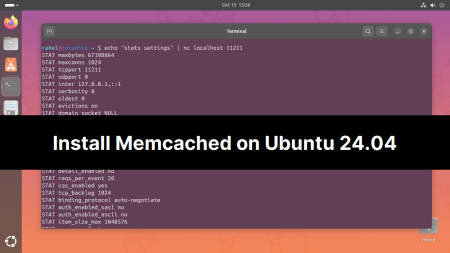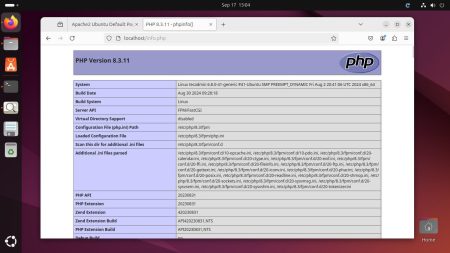PHP stands for Hypertext Preprocessor, and it’s your go-to for crafting email communications within your web applications. Its mail() function is a marvel of simplicity and efficiency, offering you the means to send emails with minimal fuss. Whether it’s a simple notification or a complex marketing campaign, PHP stands ready to dispatch your messages into the digital ether. Success or failure? The function’s return value leaves no room for guesswork.
Configuring PHP for Email Success
PHP’s email prowess is powered by the sendmail_path directive found in the PHP.ini file. For Unix enthusiasts, the paths /usr/sbin/sendmail or /usr/bin/sendmail are your bread and butter. But what if you’re team Qmail or another email system? Fear not, for PHP is as adaptable as it is powerful. A simple tweak to the sendmail_path directive points PHP in the right direction, ensuring your emails find their way.
Three PHP Scripts to Cover All Bases
This guide isn’t just about sending emails; it’s about mastering them. We delve into three practical scripts:
- A basic script for sending emails without breaking a sweat.
- A script for sending HTML emails because plain text just doesn’t cut it sometimes.
- A guide to using an external SMTP server, stepping up your email game.
1. The Basics: Sending Emails with PHP
Start by creating a file named sendEmail.php. This script is your entry ticket to the world of email sending. Populate it with the email’s recipient, subject, body, and sender’s email. Then, let PHP’s mail() function work its magic. Testing is a breeze, whether through a browser or the command line. Success means a job well done; failure means there’s room to learn.
<?php
// Define recipient, subject, body, and headers of the email
$toEmail = '[email protected]';
$subject = 'Simple Email Test via PHP';
$body = "Hi,\nThis is a test email sent by a PHP script.";
$headers = 'From: [email protected]';
// Send the email
$emailSent = mail($toEmail, $subject, $body, $headers);
// Output based on email sending status
if ($emailSent) {
echo "Email successfully sent to {$toEmail}...";
} else {
echo 'Email sending failed...';
}
?>
2. HTML Emails: Because Style Matters
Why settle for plain text when HTML emails can convey so much more? This segment guides you through creating a PHP script that sends HTML emails. A simple web form becomes your portal for sending test emails, showcasing PHP’s versatility and your creativity.
<?php
// Check if the form was submitted
if ($_SERVER["REQUEST_METHOD"] == "POST" && isset($_POST["submit"])) {
// Form was submitted, process the data
// Initialize variables and assign them values from POST data
$toEmail = filter_input(INPUT_POST, 'to_email', FILTER_SANITIZE_EMAIL);
$fromEmail = filter_input(INPUT_POST, 'from_email', FILTER_SANITIZE_EMAIL);
$subject = filter_input(INPUT_POST, 'subject', FILTER_SANITIZE_STRING);
$body = filter_input(INPUT_POST, 'message', FILTER_SANITIZE_STRING);
$headers = 'From: ' . $fromEmail;
// Basic validation
if (!filter_var($toEmail, FILTER_VALIDATE_EMAIL)) {
echo "Invalid recipient email address.";
} elseif (!filter_var($fromEmail, FILTER_VALIDATE_EMAIL)) {
echo "Invalid sender email address.";
} elseif (empty($subject) || empty($body)) {
echo "Subject and message cannot be empty.";
} else {
// Attempt to send the email
if (mail($toEmail, $subject, $body, $headers)) {
echo "Email successfully sent to {$toEmail}...";
} else {
echo "Email sending failed...";
}
}
} else {
// Form was not submitted, display the form
?>
<form method="post" action="">
To: <input type="text" name="to_email"><br>
From: <input type="text" name="from_email"><br>
Subject: <input type="text" name="subject"><br>
Message: <textarea rows="10" cols="20" name="message"></textarea><br>
<input type="submit" name="submit" value="Send Email">
</form>
<?php
}
?>
3. Going Pro: Using an External SMTP Server
Sometimes, PHP’s built-in mail function needs a little help from its friends. Enter PHPMailer, a library that opens the door to sophisticated email features. This part of the guide walks you through setting up PHPMailer with your SMTP server details. Attachments, CC, BCC, and HTML content? All in a day’s work for PHPMailer.
<?php
use PHPMailer\PHPMailer\PHPMailer;
use PHPMailer\PHPMailer\Exception;
require 'vendor/autoload.php';
function sendEmail($recipients, $subject, $body, $attachments = []) {
$mail = new PHPMailer(true);
try {
// Server settings
$mail->isSMTP();
$mail->Host = 'smtp.gmail.com';
$mail->SMTPAuth = true;
$mail->Username = '[email protected]';
$mail->Password = '_password_';
$mail->SMTPSecure = 'tls';
$mail->Port = 587;
// Sender and recipients
$mail->setFrom('[email protected]', 'Admin');
foreach ($recipients as $address => $name) {
$mail->addAddress($address, $name);
}
$mail->addReplyTo('[email protected]', 'NoReply');
$mail->addCC('[email protected]');
$mail->addBCC('[email protected]');
// Attachments
foreach ($attachments as $attachment) {
$mail->addAttachment($attachment);
}
// Content
$mail->isHTML(true);
$mail->Subject = $subject;
$mail->Body = $body;
// Send the email
$mail->send();
echo 'Message has been sent.';
} catch (Exception $e) {
echo "Message could not be sent. Mailer Error: {$mail->ErrorInfo}";
}
}
// Usage example
$recipients = [
'[email protected]' => 'Recipient1',
'[email protected]' => ''
];
$subject = 'Mail Subject Here!';
$body = 'Mail body content goes here';
$attachments = ['/backup/test.log'];
sendEmail($recipients, $subject, $body, $attachments);
?>
Conclusion
Through these examples, we’ve showcased PHP’s robust capabilities in email communication. From the straightforward to the complex, PHP’s mail() function and PHPMailer library are indispensable tools for developers. Want to dive deeper? The PHP manual awaits with a treasure trove of information.
By reimagining the structure and language of the original article, this version aims to engage readers more effectively and improve its SEO performance, making it a valuable resource for developers looking to leverage PHP for email communication.



12 Comments
Stop provide insecure email sending, whoever gonna use this it will be easily hackable. at least show them how to escape or stop giving vulnerable code
Thanks For This Useful article
Hi. How do l make my submit button to work? How do l write the php and can l write the php code inside my index.html file? I have my hosting and domain with namecheap.
how to send mail from localhost without using FTP server in php
no you cant send email on localhost
Thanks please post how to send email using google SMTP.
thanks, it really worked
didnt work AT ALL where u tested it??
Thanks for this script. It works fine
thanks for the sugestion
Thanks please post how to send email using google SMTP.
Hi Rahul,
Should the line endings in the script be “\r\n” ?
Also, on Debian 9 with php-mail installed to provide PEAR’s Mail:: package how would this be used to send SMTP email?
Cheers,
Noel